You won’t find an easier, more reliable way toward a better power-to-weight ratio than with an engine swap. This is exactly why shoehorning bigger, more powerful engines into smaller cars has been going on almost as long as bigger, more powerful engines and smaller cars have existed. For the Japanese car lover, the whole practice isn’t quite as matured but has been around long enough to solidify the definitive short list of the best donor engines you could ask for.
Honda B-Series VTEC
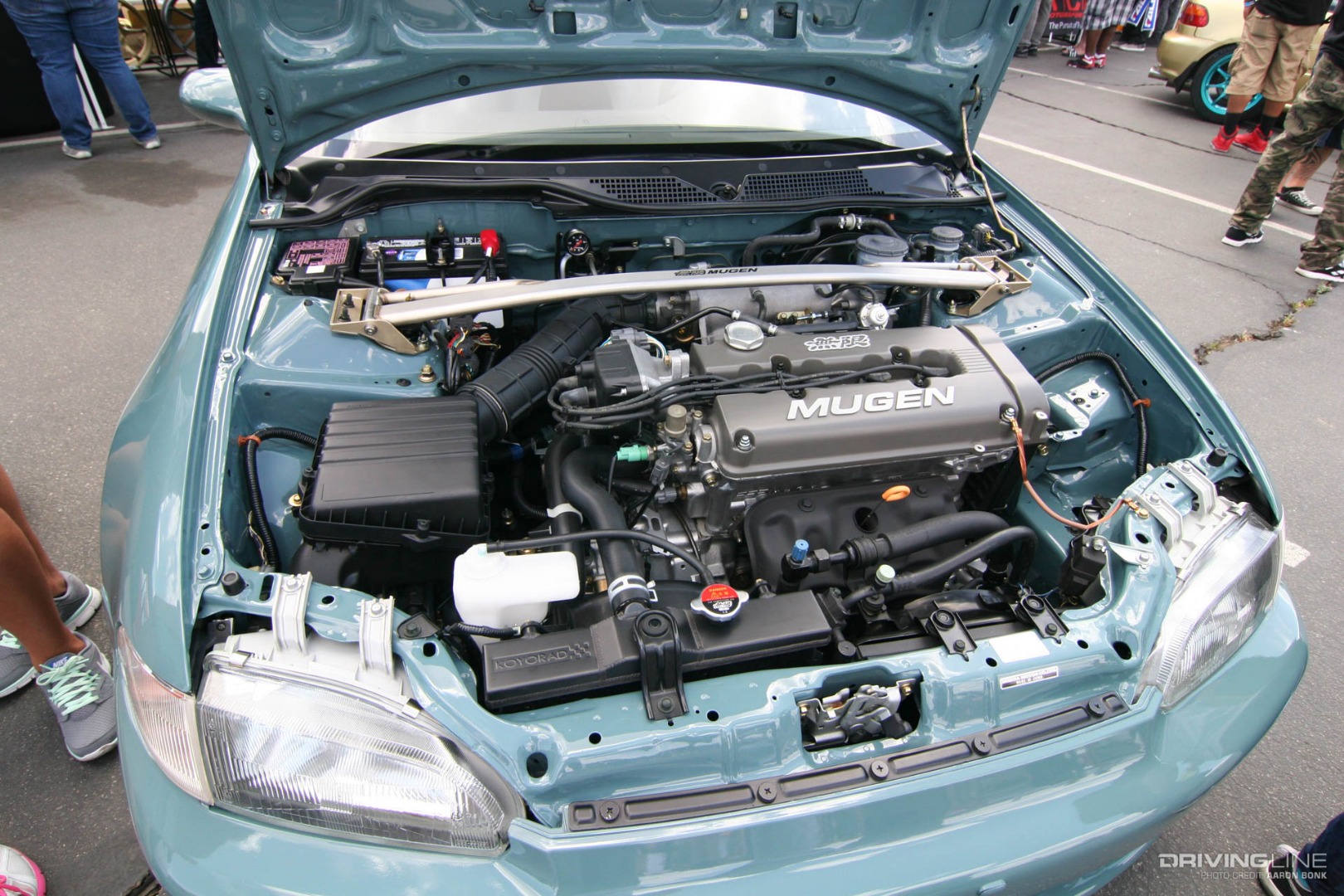
| THE PROS | Honda’s B-series—particularly its VTEC models—remains one of the most swapped engines of all time. That’s because few engines have the sort of aftermarket support and potential that the B-series does. Even some 17 years after Honda’s stopped making them, it remains the engine of choice for some of the most powerful Hondas in history, capable of well over 1,000hp. |
| THE CONS | Yours won’t make 1,000hp. Getting past the 400hp mark is easy enough, but it’ll cost you. The cylinders, rotating assembly, fuel system, engine management and drivetrain all need to be rethought if you care about any of it holding together. |
| WHERE TO GET YOURS | In the U.S., B16A2 and B16A3 engines were offered in the 1999-2000 Civic Si and 1994-1997 del Sol VTEC, respectively. Only the 1992-1993 Integra GS-R featured the B17A1. The B18C1 can be found in any 1994-2001 Integra GS-R, and its more powerful relative, the B18C5, was available in all 1997-2001 (excluding 1999) Integra Type Rs. B16A engines are native to most 1987-2000 Japanese-spec Si, Si-II, SiR and SiR-II-badged Civic and CRX chassis. Similar 1.6L engines can be found in Japanese-only 1989-1993 Integra RSi and XSi models. Only the Japanese market 1997-2001 Civic came with the unique B16B engine. Japanese-only B18C engines can be found in 1993-2001 Integra Si VTEC, SiR-G and Type R chassis, however, the Type R’s engine is a different, more powerful version. |
| WHAT TO PUT IT IN | You can use any 1984-2000 Civic, CRX or del Sol, or any 1986-2001 Integra. |
| THE NUMBERS | There are four different B-series VTEC engines you should know about: the 1.6L version, the 1.6L B16B anomaly that’s hiding inside of a taller-deck block, the B17A1 that’s nearly identical to the B16A except for its longer stroke, and the 1.8L. Horsepower varies a lot, with early B16A models measuring in at only 160hp and some of the final JDM-spec, 1.8L Type R versions reaching almost 200hp. Don’t be a bonehead when cross-pollenating, though; dropping a 160hp B16A into an ITR will never be your finest moment. |
| THE DOLLARS | A swap with everything you need, like the engine, transmission, ECU and aftermarket engine mounts and axles can set you back as little as $1,500 for an early model B16A or as much as $7,000 for something more powerful, like the CTR’s B16B. |
Honda K-Series
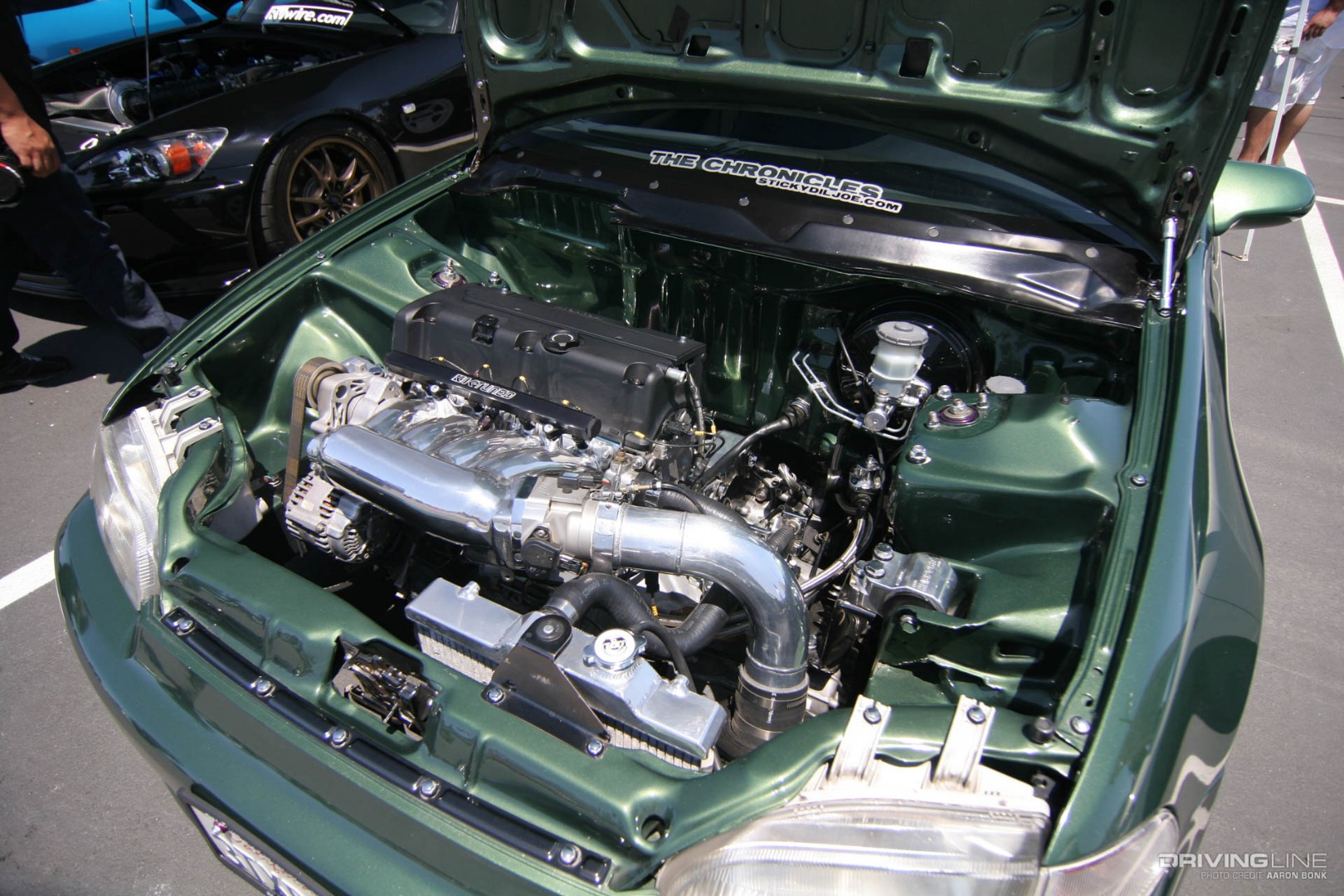
| THE PROS | In terms of factory horsepower, there’s no other four-cylinder Honda engine swap that’ll compare. Only the B-series rivals the K-series in terms of aftermarket support, but we’ll probably be eating those words in just a few years. |
| THE CONS | Horsepower isn’t cheap. Because of the engines’ orientation and shifter layout, all sorts of aftermarket components are required to complete any K-series swap. The engines and transmissions themselves aren’t inexpensive either. |
| WHERE TO GET YOURS | You first saw the K20A2 in the North American-spec 2002-2004 RSX Type-S and then later as the K20Z1 for 2005-2006 models. The similar K20Z3 can be sourced from any 2006-2011 Civic Si. In Japan, the K20A came in dozens of vehicles, however, look for more powerful versions exclusive to 2001-2011 Civic Type R, Type R Euro, Integra Type R and Accord Euro R models. Back in the U.S., the 2004-2008 TSX came with the larger-displacement K24A2, with Japanese variants available in 2004-2008 Accord 24S, 24T, 24TL and Type S chassis. |
| WHAT TO PUT IT IN | Any 1988-2005 Civic, CRX or del Sol, or any 1990-2001 Integra works well. Or go buck wild and stick one in a 1990-1997 Accord, a 1992-1996 Prelude or any CR-Z or Fit. |
| THE NUMBERS | Available in 2.0L and 2.4L configurations (2.3L turbocharged RDX engines are entirely different and won’t fit), Honda’s K-series is its most sophisticated four-cylinder to date. The ones you care about come with variable valve lift at all 16 valves and electronically controlled camshaft phasing on the intake side. Power starts at 197hp on cheaper 2.0L engines and is rated as high as 222hp on select, naturally aspirated Type R versions. |
| THE DOLLARS | K-series engines, like any of these that have VTEC on both camshafts, are expensive. They are, however, the most powerful. Pricing starts around $6,000 for a complete K20A2 swap and can jump past the $10,000 mark once you start uttering anything “Type R.” |
Honda F-Series (DOHC)
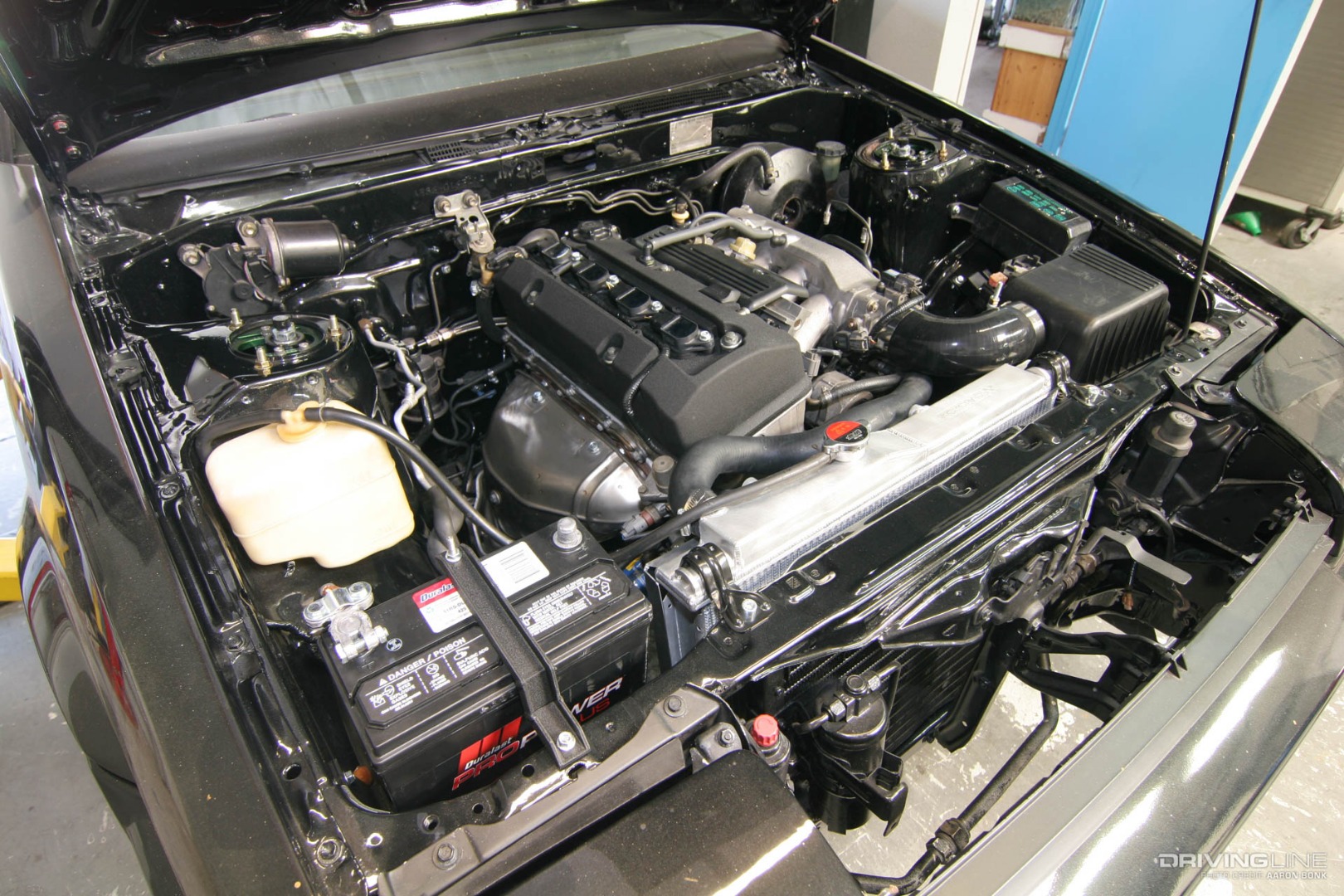
| THE PROS | It remains Honda’s most powerful, naturally aspirated four-cylinder engine to date and for years boasted a specific output rivaled only by the Ferrari 458 Italia and Porsche 911 GT3 RS 4.0. |
| THE CONS | You can barely afford it, and converting a non-Honda chassis to work with it requires custom engine mounts, a revised engine management system and all sorts of complicated wiring. |
| WHERE TO GET YOURS | Look to the 1999-2005 Japanese-spec S2000 for the smaller-displacement F20C and late-2005-2009 models for the bigger F22C. In North America, the F20C1 was available from 2000-2003 until it was replaced with the F22C1 for model years 2004-2009. Special JDM-only Type V and U.S.-only CR models were sold with the same 2.0L and 2.2L engines, depending on their year. |
| WHAT TO PUT IT IN | Although not a direct, bolt-in transplant, the F-series regularly makes its way into Miata chassis as well as classic RWD Toyota platforms like older Corollas, Starlets and Celicas. The F-series also serves as the basis for at least a few RWD-converted Hondas like the 1992-2000 Civic or 1994-2001 Integra. |
| THE NUMBERS | Honda’s DOHC F-series is the unofficial K-series predecessor. Honda implemented things like a timing chain-driven valvetrain, roller rocker cam followers, a clockwise-rotating assembly and one of the best-performing cylinder heads of any mass-produced, four-cylinder production engine. Both 2.0L and 2.4L engines make 240hp—the larger of the two laying down a whopping 162 lb-ft of torque. |
| THE DOLLARS | S2000 production numbers pale in comparison to B-series or K-series chassis. As such, an F-series powertrain will cost you dearly. Depending on the chassis and the number of aftermarket components needed to complete the conversion, plan on spending upward of $6,000 and in most cases more since custom mounts, brackets and fab work will almost always be required. |
Honda J-Series
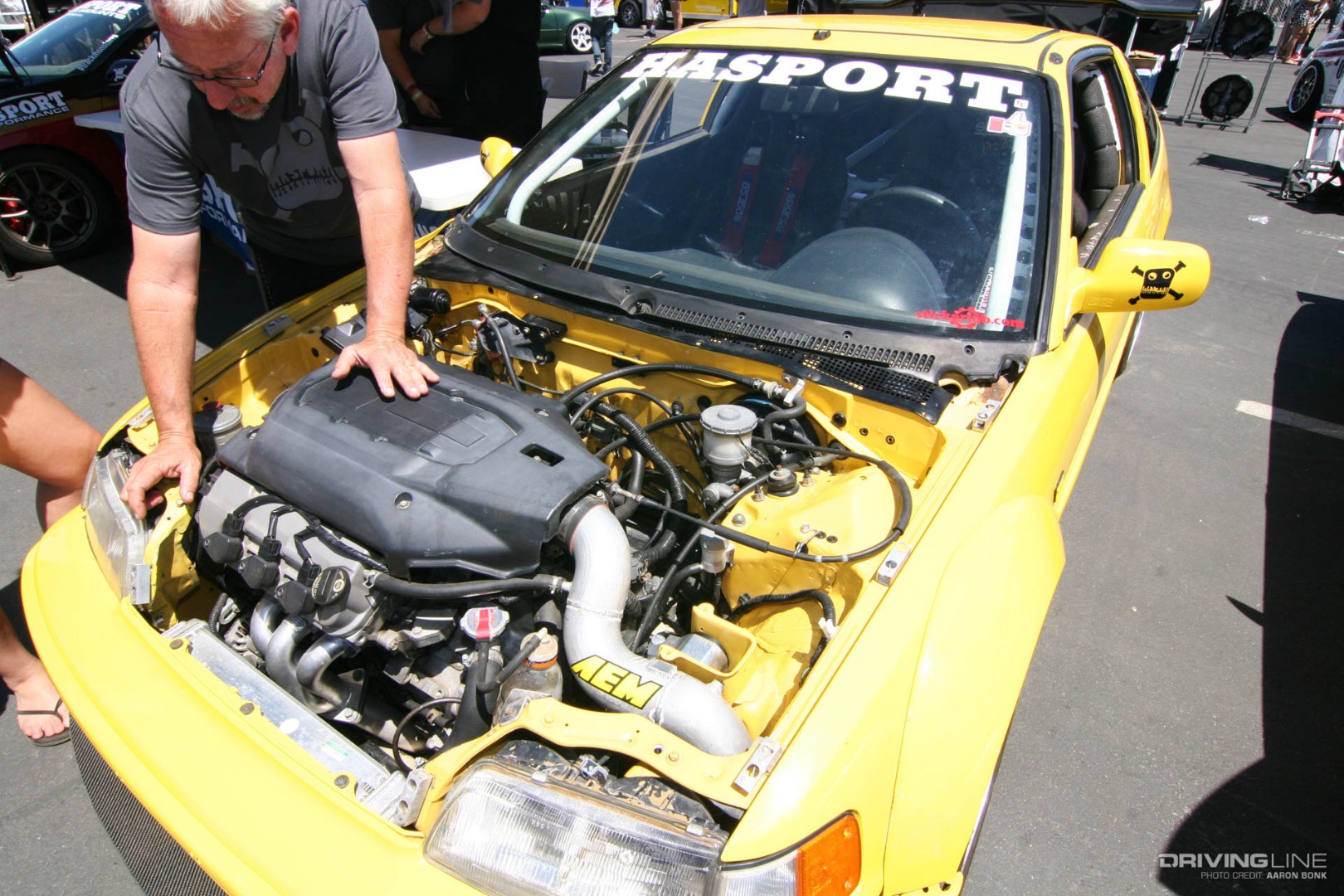
| THE PROS | As far as horsepower per dollar goes, there is no better bargain than Honda’s 60-degree V6 engine family. You won’t find 240hp for such little money anyplace else. |
| THE CONS | Compared to other Honda engines, you’ll have a harder time finding upgrades for it, and at 550 lbs, it’s just about the heaviest thing you could stick in that bay of yours. |
| WHERE TO GET YOURS | Honda introduced its J-series platform for the 1997 model year, and it’s since been offered in all sorts of configurations and displacements. Nab one from any of these: Odyssey, Ridgeline, Pilot and Accord, as well as the CL, TL, RL, TSX, TLX, RLX, RDX, MDX and ZDX. J-series engines were sold in such abundance here in the U.S. that sourcing a Japanese-version will hardly be necessary. Keep your swap simple by looking to the more powerful coil-on-plug engines, and avoid those with drive-by-wire throttle bodies. |
| WHAT TO PUT IT IN | Any 1988-2000 Civic, CRX or del Sol, as well as any 1994-2001 Integra, works well. Breathe new life back into any 1990-1997 Accord with one, too. |
| THE NUMBERS | Honda’s single-cam, 60-degree J-series is the successor to its larger 90-degree V6 platform of years past. Power varies quite a bit between platforms—as low as 240hp and as much as 310hp—with a combination of either VTEC or i-VTEC available for every one. |
| THE DOLLLARS | It's about $4,000 for an entry-level Odyssey minivan engine, the right transmission and whatever engine mounts and electrical mods you’ll need. Newer and more powerful engines mean more money. |
Toyota JZ
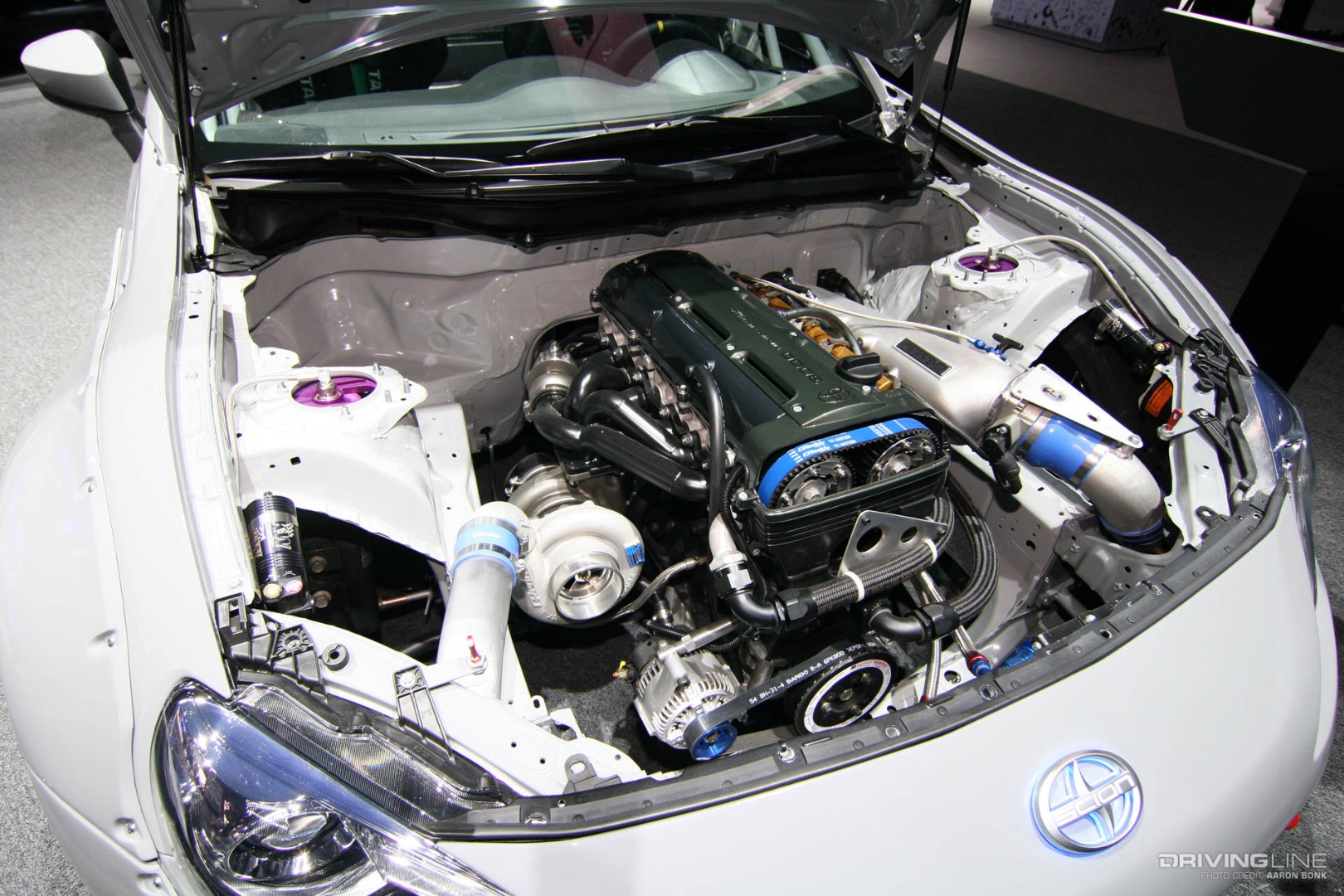
| THE PROS | With the exception of Nissan’s RB, Japan’s never produced a stronger, more capable engine. |
| THE CONS | Doing it. Getting any kind of 1JZ or 2JZ into any non-native Toyota chassis can be a demanding job, even for the most seasoned of fabricators and wiring pros. |
| WHERE TO GET YOURS | There are all sorts of Toyota JZ engines, but the only ones you care about are the factory turbocharged ones. Most obvious is the twin-turbocharged 2JZ-GTE, which can be nabbed from the North-American-spec 1993-1998 Supra Turbo or its 1993-2002 Japanese counterpart. Also native to Japan, select models of Toyota’s first- and second-generation Aristo came with the same twin-turbocharged inline-six. Third-generation 1JZ-GTE engines are similar enough and are most commonly sourced from Japanese-only Toyota sedans, the most common of which is the 1996-2000 Chaser you barely knew existed. |
| WHAT TO PUT IT IN | Drop either into any of the following Lexus chassis: 1992-2000 SC 300, 1993-2006 GS 300 or 2001-2005 IS 300. It also fits into any Mark II or Mark III Supra as well as any 1985-1992 Cressida. More complex swaps include those into non-native chassis, like the third-generation RX-7, S2000 or 240SX, to name a few. |
| THE NUMBERS | Toyota’s 2JZ-GTE is their most respected engine ever. The 3.0L engine’s cast-iron block is virtually indestructible, allowing its twin-turbocharged power figures to be increased significantly with little strengthening needed. North American versions lay down 320hp and 315 lb-ft of torque—conservative figures if there ever were ones considering the engine’s capabilities. Later versions, including the de-stroked and single-turbocharged 2.5L 1JZ-GTE also benefit from Toyota’s variable valve timing: VVT-i. |
| THE DOLLARS | Budget at least $7,500 for a good-running 3.0L engine, both turbos and the factory-issued GETRAG gearbox. If you’ve got another transmission in mind, lop about $4,000 off that figure. 1JZ-GTE engines are marginally cheaper, regularly selling for around $1,500. Account for another $2,000 worth of electronics and mounts when swapping into any non-Toyota chassis. |
Nissan SR20DET
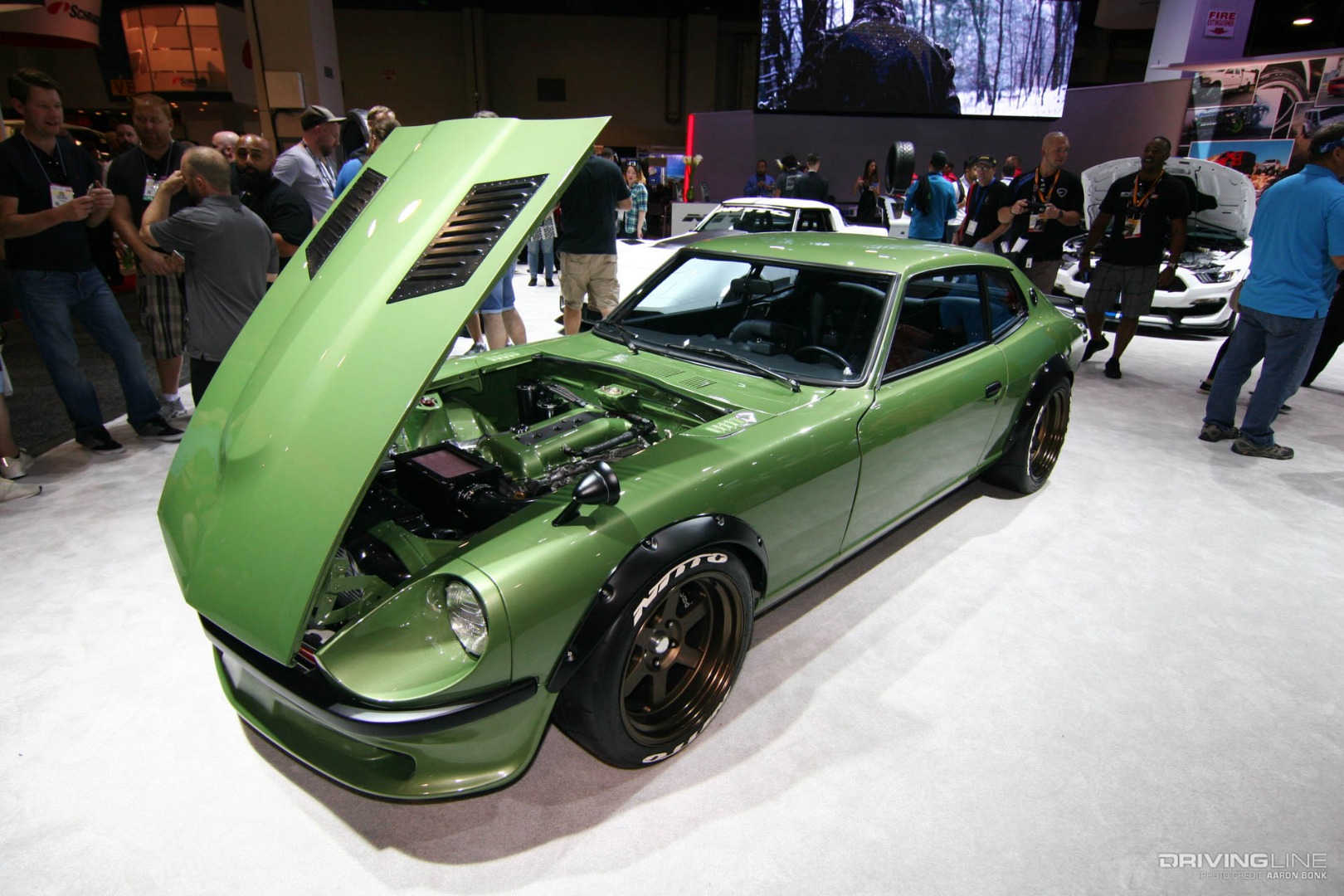
| THE PROS | The SR20DET's compatibility in both transverse and longitudinal form increases the number of chassis it’ll work on. A proven platform, eclipsing the 300hp mark requires little effort. |
| THE CONS | Nissan’s SR20DET has been out of production for well over a decade, which means low-mileage specimens might be impossible to come by. Swapping one into any non-native chassis can also be a daunting thing to do. |
| WHERE TO GET YOURS | The factory-turbocharged SR engine your friends say you ought to care about—the SR20DET—comes all sorts of ways, all of which can be distinguished by turbocharger type and valve cover color, and are native to both FWD and RWD layouts. Red valve cover: 1991-1993 Silvia K’s, 180SX and Bluebird SSS ATTESA LTD; 1990-1994 Pulsar GTi-R and Sunny GTi-R (Euro). Black valve cover: 1994-1999 Silvia K’s, 1999-2002 Silvia Spec-R, 1994-1997 180SX Type R and Type X, 1994-1995 Bluebird SSS ATTESA LTD, and 1993-1999 200SX (Euro). Silver valve cover: 1995-2001 Avenir Salut GT Turbo and GT4, and 1997-2001 R’nessa GT Turbo. |
| WHAT TO PUT IT IN | Go easy on yourself and consider any 1989-1998 240SX. Or give yourself a hard time and retrofit one into just about any Miata, RX-7 or classic Toyota or Datsun. |
| THE NUMBERS | Used in both FWD and RWD applications, Nissan’s 2.0L SR20DET features an 86mm, square architecture turbocharger, either a T25 or T28, depending on the year. Variable cam timing, six-speed transmissions and individual throttle bodies are all features that can be found on various versions, with power nearing the 245hp mark on later engines. |
| THE DOLLARS | Set aside roughly $2,000 for a complete swap. For non-native chassis, set aside even more for engine mounts and electronics. |
Nissan RB26DETT

| THE PROS | It’s the last word on Japanese supercar engines. |
| THE CONS | The Pep Boys parts counter guy won’t be able to help you with this one. That and the RB26DETT remains one of the most expensive Japanese engines to modify. |
| WHERE TO GET YOURS | Nissan’s RB series of engines goes back to the mid-1980s, but it’s the newer engines that suit most swaps. By new we mean the R32, R33 and R34 Skyline GT-R and the almighty RB26DETT. |
| WHAT TO PUT IT IN | Because of the GT-R’s Japanese exclusivity, it makes for a drop-in swap into almost no chassis. Still, popular candidates include the full lineup of Datsun’s Z cars as well as Nissan’s 300ZX and 240SX. Don’t expect to use the GT-R’s AWD gearbox, though. |
| THE NUMBERS | It has six inline cylinders, individual throttle bodies, two turbos, dual-overhead cams and a severely detuned maximum output of about 280hp. The 2.6L engine’s turbos are arranged uniquely, dedicating each to their own triad of cylinders. Like Toyota’s 2JZ-GTE, the RB26DETT’s cast-iron block lends itself well to increased power, allowing upwards of 600hp to be made with only minimal modifications. |
| THE DOLLARS | The long-block will set you back about $3,000, but that isn’t the end of it. You’ll also need the RWD transmission normally paired to RB25DET-equipped Skylines. Set aside another $1,000 for this and another grand for any supporting swap components. |
If you want to see how one would go about doing an engine swap, check out our breakdown on putting an F-series and K-series engine in a Toyota AE86!